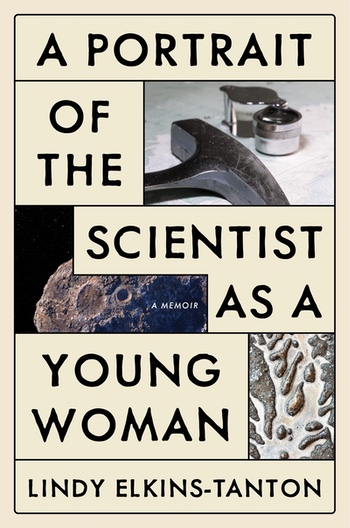Review: A Portrait of the Scientist as a Young Womanby Jeff Foust
|
| “There aren’t many people who have led deep space missions and each of us followed our own path,” she writes. “But if there are a series of paths that have worked in the past, I can say with some certainty that I did not follow any of them.” |
However, there were no celebrations and no launch, and Psyche the spacecraft remains in Florida. NASA announced in May that it was postponing the launch to a backup launch window in the fall, then in June postponed the launch indefinitely. Issues with a testbed—a mix of hardware and software from JPL and satellite manufacturer Maxar—delayed testing of key spacecraft software to the point where NASA concluded it would not be ready in time for a launch this year. An independent panel is reviewing the issue as NASA looks for new launch opportunities as soon as the middle of 2023.
Few people, though, may be better equipped to deal with a setback like that than Elkins-Tanton. As she describes in her recent memoir, A Portrait of the Scientist as a Young Woman, her life and career has seen much bigger twists and turns than a delay in a spacecraft launch. “There aren’t many people who have led deep space missions and each of us followed our own path,” she writes early in the book. “But if there are a series of paths that have worked in the past, I can say with some certainty that I did not follow any of them.”
Her path started conventionally enough: going to MIT and getting BS and MS degrees in geological sciences. It then diverged quickly: leaving academia to work in consulting, getting married, having a child, and getting divorced. Only later does her career path start to again resemble a more typical one, with a return to grad school for a PhD and then various positions in academia, including her current one at Arizona State University.
She offers an unvarnished look at the personal and professional challenges in her life, from family relationships to securing jobs in academia, a reminder that life is not a tale of monotonic progress. She lingers on some aspects, like the series of field expeditions to Siberia, looking for rocks that would provide clues to a massive volcanic event 250 million years ago linked to a major extinction, a series of trips that posed physical, cultural, and bureaucratic obstacles to overcome.
| She describes elsewhere in the book the desire to get away from the “hero model” in academia and its equivalent in space, what she calls the “aerospace cavalry”: the team that rides to the rescue of struggling projects, pushes aside the original engineers, and “pull heroic wins out from seemingly certain losses.” |
Elkins-Tanton also provides a fascinating glimpse into the work that goes into winning a competition for a NASA mission like Psyche. That work is more than just writing a proposal and waiting for NASA to select it: for major programs, like the Discovery line of planetary science missions, the agency selects a set of finalists who get funding for additional studies, but with it much more work to convince NASA. That includes months of preparation for what’s known as a “site visit,” where NASA officials come for extensive presentations about and questioning of the mission team. She provides perhaps the most detailed behind-the-scenes perspective yet of the planning for the site visit and the visit itself, as well as the call months later that NASA selected Psyche (along with Lucy, another asteroid mission) from the five finalists considered.
She describes elsewhere in the book the desire to get away from the “hero model” in academia and its equivalent in space, what she calls the “aerospace cavalry”: the team that rides to the rescue of struggling projects, pushes aside the original engineers, and “pull heroic wins out from seemingly certain losses.” Doing so, she argues, take a huge toll on both those who ride to the rescue and those who are rescued. “So I decided the goal was never to be the hero and never to have to call in the heroes,” she writes. “The goal was to do it better from the very beginning.” That view has certainly been challenged, at least, by the problems with Psyche.
Psyche’s future is still uncertain: at a NASA town hall meeting last week, agency officials said a “continuation/termination” review for the mission is tentatively scheduled for early November. As the name suggests, that leaves open the possibility NASA could cancel Psyche, although a more likely outcome is the mission will continue with a new launch date and some additional costs, one that will push back Psyche the spacecraft’s arrival at Psyche the asteroid to late this decade. It may be just another twist in the nontraditional, but ultimately fulfilling, path taken by Elkins-Tanton in her career and her life.
Note: we are using a new commenting system, which may require you to create a new account.
